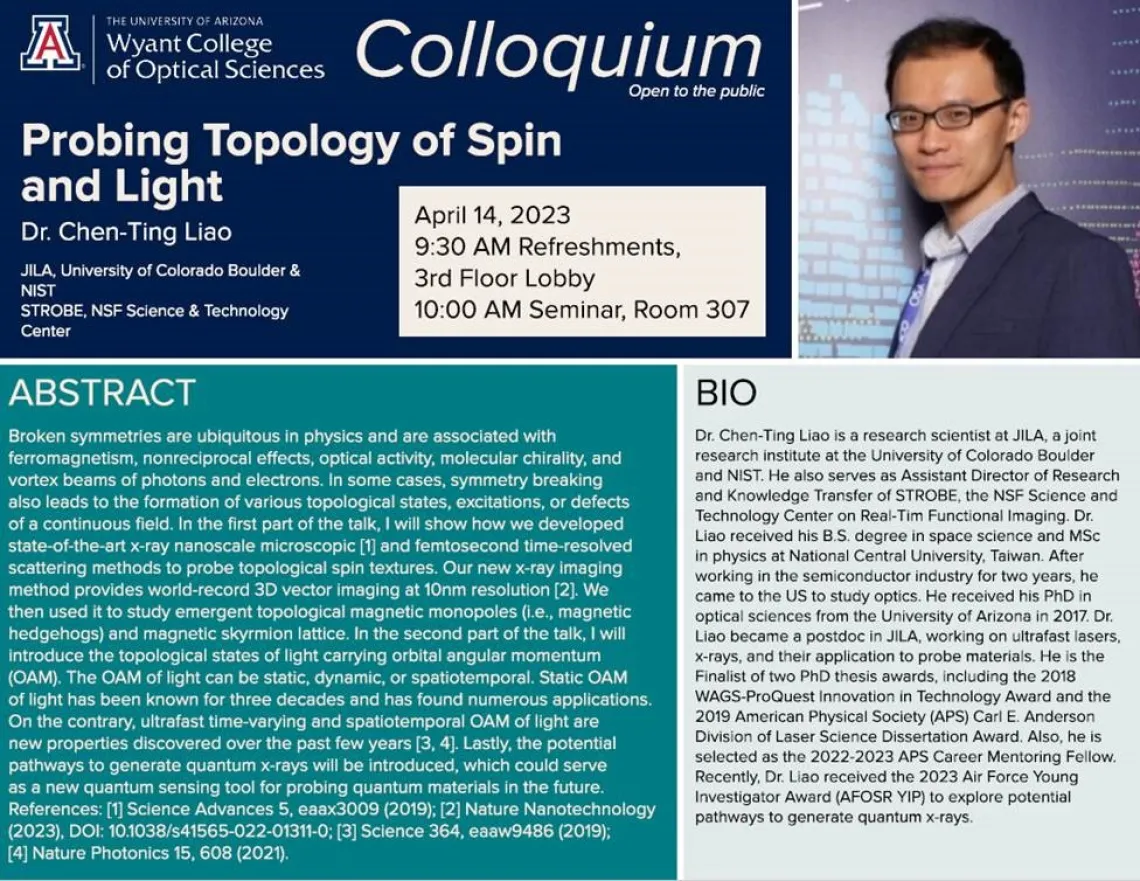
When
Where
Abstract
Broken symmetries are ubiquitous in physics and are associated with ferromagnetism, nonreciprocal effects, optical activity, molecular chirality, and vortex beams of photons and electrons. In some cases, symmetry breaking also leads to the formation of various topological states, excitations, or defects of a continuous field. In the first part of the talk, I will show how we developed state-of-the-art x-ray nanoscale microscopic [1] and femtosecond time-resolved scattering methods to probe topological spin textures. Our new x-ray imaging method provides world-record 3D vector imaging at 10nm resolution [2]. We then used it to study emergent topological magnetic monopoles (i.e., magnetic hedgehogs) and magnetic skyrmion lattice. In the second part of the talk, I will introduce the topological states of light carrying orbital angular momentum (OAM). The OAM of light can be static, dynamic, or spatiotemporal. Static OAM of light has been known for three decades and has found numerous applications. On the contrary, ultrafast time-varying and spatiotemporal OAM of light are new properties discovered over the past few years [3, 4]. Lastly, the potential pathways to generate quantum x-rays will be introduced, which could serve as a new quantum sensing tool for probing quantum materials in the future.
References: [1] Science Advances 5, eaax3009 (2019); [2] Nature Nanotechnology (2023), DOI: 10.1038/s41565-022-01311-0; [3] Science 364, eaaw9486 (2019); [4] Nature Photonics 15, 608 (2021).
Bio
Dr. Chen-Ting Liao is a research scientist at JILA, a joint research institute at the University of Colorado Boulder and NIST. He also serves as Assistant Director of Research and Knowledge Transfer of STROBE, the NSF Science and Technology Center on Real-Tim Functional Imaging. Dr. Liao received his B.S. degree in space science and MSc in physics at National Central University, Taiwan. After working in the semiconductor industry for two years, he came to the US to study optics. He received his PhD in optical sciences from the University of Arizona in 2017. Dr. Liao became a postdoc in JILA, working on ultrafast lasers, x-rays, and their application to probe materials. He is the Finalist of two PhD thesis awards, including the 2018 WAGS-ProQuest Innovation in Technology Award and the 2019 American Physical Society (APS) Carl E. Anderson Division of Laser Science Dissertation Award. Also, he is selected as the 2022-2023 APS Career Mentoring Fellow. Recently, Dr. Liao received the 2023 Air Force Young Investigator Award (AFOSR YIP) to explore potential pathways to generate quantum x-rays.
